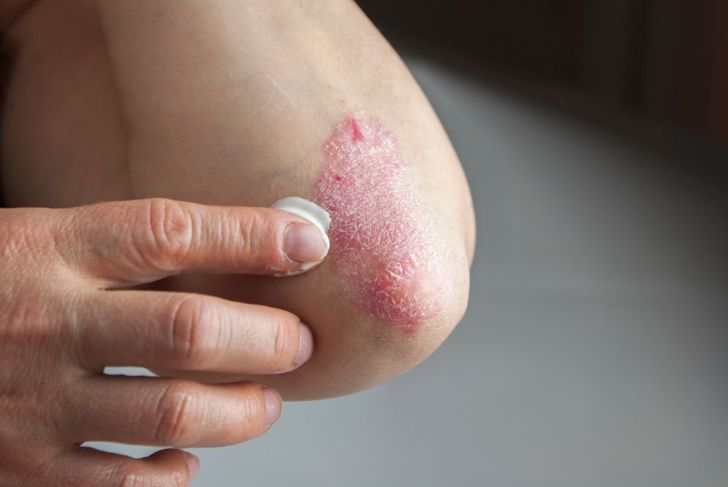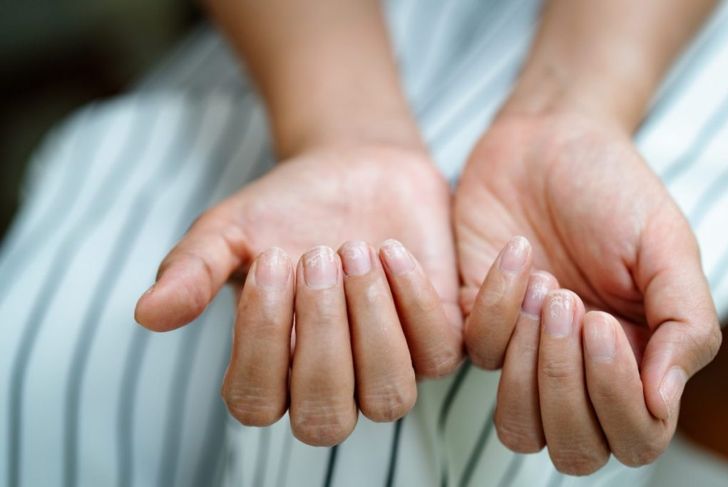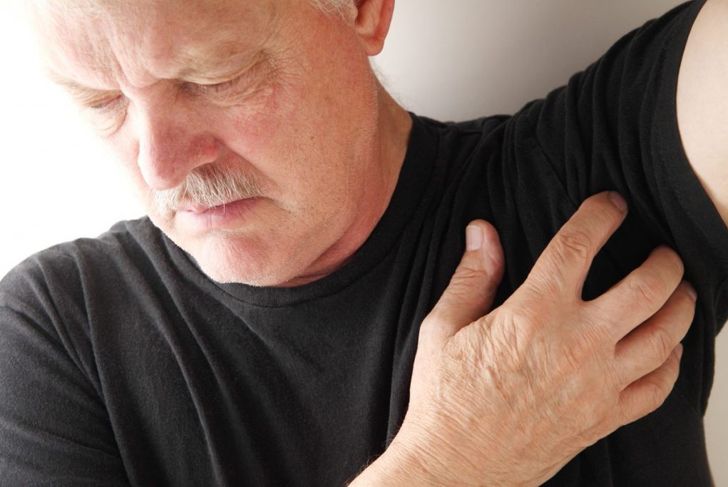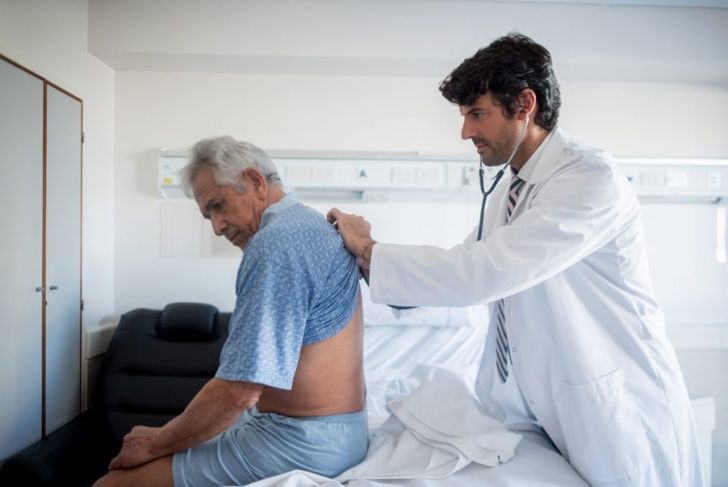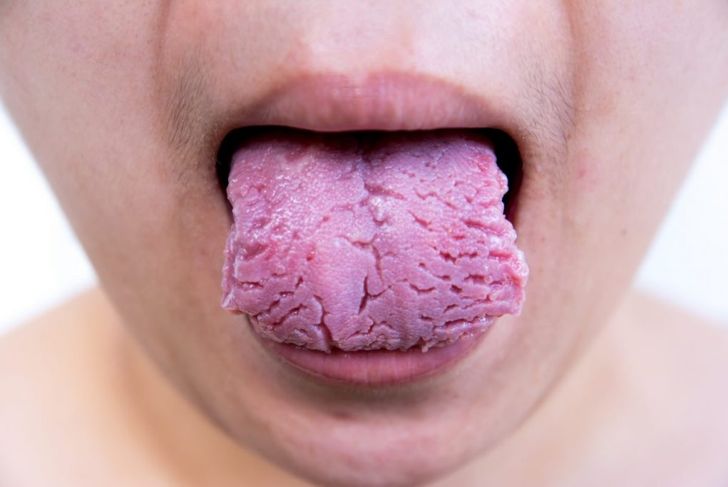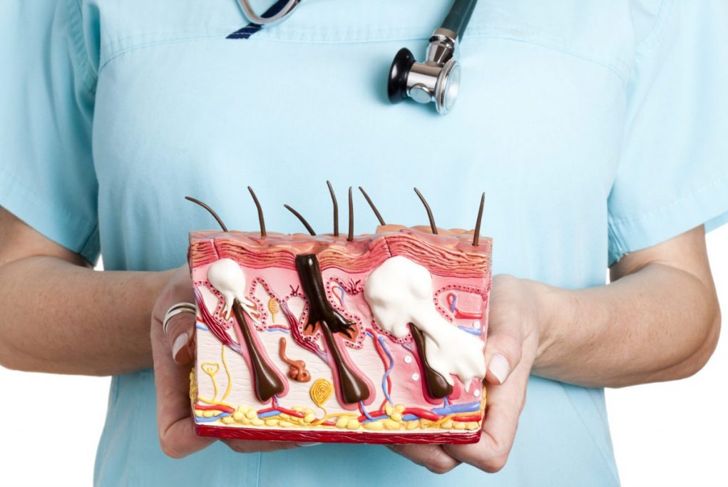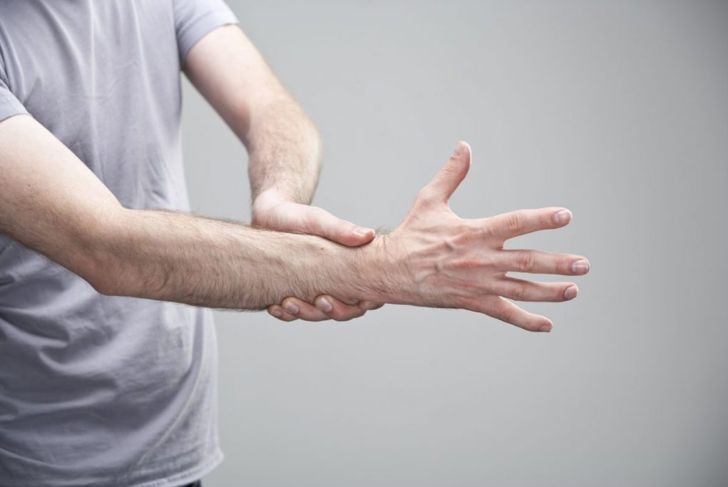Psoriasis is a common skin condition that occurs when the immune system becomes overactive and attacks skin cells. Because of this, the skin cells go through their life cycle more quickly, and red patches develop on the skin’s surface. These lesions can be itchy and painful, and other factors, such as size, severity, and coverage, are also extremely variable. A person’s exact symptoms vary depending on what type of psoriasis they have, though all types cause some kind of patch.
White, Scaly Plaques
Most people with psoriasis have plaque psoriasis. Unlike some other forms, these patches have silvery-white scales coating their surfaces, which identifies them as plaques. They usually grow on the scalp, knees, elbows, and back, though they can develop almost anywhere. The white scales are dead skin that accumulates because the body is trying to produce new skin cells too quickly.
Nail Issues
Psoriasis can dramatically alter the appearance of fingernails and toenails. One of the most common effects of nail psoriasis is pitting, the formation of small, pinhead-sized depressions. Some individuals experience nail whitening or yellow-red discoloration. In some cases, the skin under the nail thickens. Rarely, do people with nail psoriasis develop onycholysis, meaning that their nails loosen or separate? Psoriasis can also make the nail brittle, leading to crumbling. Symptoms vary depending on which structure within the nail psoriasis affects. Many of the condition’s effects are due to faster keratinization, the process through which new nails form. There are also some links to nail fungus as a possible cause.
Papules
People with guttate psoriasis develop many small, scaly lesions. Usually, these patches are less than one centimeter in size and have a tear-like shape, which identifies them as papules. They are often red or pink and primarily affect the trunk, limbs, and scalp. Interestingly, this type of psoriasis is usually the result of a bacterial infection like strep throat. When a person has a strep infection, their immune system increases the number of immune cells in the tonsils. Some of these immune cells travel to the skin, aggravating the inflammation of psoriasis.
Smooth Patches
Psoriasis doesn’t always cause scratchy or scaly patches. Inverse psoriasis’ characteristic symptoms are smooth lesions of inflammation that usually affect skin folds of the genitals, armpits, between the buttocks, and under the breasts. Because this form of psoriasis is less common than other types, physicians do not fully understand the cause. Most experts believe that trauma, heat, and minor infections each play a role in development.
Pustules
Occasionally, psoriasis can manifest as red and tender skin with many small bumps that contain non-infectious pus. These bumps or pustules give this form its name: pustular psoriasis. These pustules usually remain localized to the hands and feet, but can spread in large patches anywhere on the body. As the pustules dry out, they may leave behind large sections of smooth, shiny skin. Some individuals experience nausea, fever, and chills in combination with these skin growths. Doctors have yet to discover why these pustules develop, though they have identified triggers, which include infections, emotional stress, pregnancy, and irritating topical agents.
Burned Skin and Shedding
One severe form of psoriasis causes the entire body to become covered in rashes. This form, erythrodermic psoriasis, often resembles a severe sunburn. Unlike other psoriasis lesions, the large rashes are shed in sheets rather than scales. Additionally, this type can affect a person’s overall body chemistry. Many people experience extreme body temperature fluctuations, leading to fluid retention and swelling, especially in the ankles. Pneumonia or heart failure are also possible. Triggers for erythrodermic psoriasis include infections, sunburns, and allergic reactions.
Napkin Psoriasis (Severe Diaper Rash)
Some infants develop skin lesions that resemble severe diaper rash. In reality, this is napkin psoriasis, and it usually affects infants between two and eight months. Usually, the lesions present as small red papules with white or silver scales. Though it usually remains near the diaper area, the rash can spread to the limbs or torso. Experts believe that this psoriasis results from the same issues that can cause diaper rash: infections, sensitive skin, and irritation from stool and urine.
Plaque and Fissured Tongue
Though it is rare, psoriasis can develop in the mouth. This type may be asymptomatic or display white or yellow-gray plaques from the accumulation of small amounts of pus and dead cells. Many people with oral psoriasis experience fissured tongues, meaning their tongues have developed cracks that vary in size, shape, and depth. Though it can be unsettling, the fissured tongue is usually painless. The cause of this symptom is unknown, but experts have found that individuals with psoriasis are more likely to develop periodontal disease, which can cause swollen or bleeding gums.
Greasy or Yellow Skin
Within the skin are many small sebaceous glands that release an oil called sebum, which causes skin and hair to become oily. Seborrheic-like psoriasis occurs in areas with higher sebum production, like the forehead, scalp, nose, chest, and skin folds. The lesions manifest as red plaques with extremely greasy or yellow scales as dead cells mix with the excess sebum. In more severe cases, this type of psoriasis may cause scaly pimples.
Arthritis
Instead of lesions, psoriasis can sometimes lead to arthritis. The clinical presentation is highly variable, and psoriatic arthritis often occurs alongside other forms. The most common effect of this type of arthritis is a painful inflammation that affects the joints and their surrounding connective tissue, usually in the fingers and toes. Inflammation can then lead to sausage-like swelling called dactylitis. Some people develop psoriatic arthritis in the hips, knees, spine, and sacroiliac joint, though these areas are less common.

 Home
Home Health
Health Diet & Nutrition
Diet & Nutrition Living Well
Living Well More
More